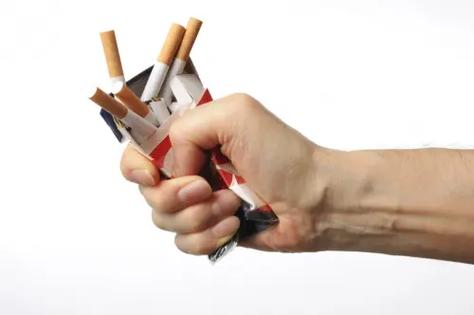The Unseen Obstacle: How Tobacco Exposure Can Limit Vision Recovery in Children After Congenital Cataract Surgery
The moment a child diagnosed with a congenital cataract undergoes successful surgery is one filled with immense hope. For parents and surgeons alike, it represents the culmination of a journey to restore sight and offer a child a clear view of the world. The sophisticated procedure to remove the cloudy lens is a marvel of modern medicine. However, the surgical intervention is only the first critical step on the path to good vision. The subsequent healing process, particularly the intricate development of the visual system in the brain, is where the true battle for sight is won or lost. It is during this fragile, post-operative period that an unexpected and often overlooked environmental factor can dramatically alter the outcome: exposure to tobacco smoke.
This article delves into the compelling and concerning connection between tobacco smoke and suboptimal visual outcomes following congenital cataract surgery. We will explore not just the "what," but the crucial "why" and "how," providing a comprehensive understanding for parents, caregivers, and anyone invested in a child's visual health.
Understanding the Critical Period of Visual Development
To appreciate the impact of tobacco, one must first understand the unique context of pediatric eye surgery. A child born with a cataract has a blocked or blurred image projected onto their retina from birth. This prevents the visual cortex—the part of the brain responsible for processing sight—from developing normally. This phase of life is known as the "critical period of visual plasticity," a window of time where the brain is exceptionally receptive to visual stimuli and forms the neural connections necessary for sharp, binocular vision.
Congenital cataract surgery aims to open this window by clearing the optical pathway. By replacing the cloudy natural lens with a clear artificial intraocular lens (IOL) or using contact lenses, light can finally focus properly on the retina. The brain, however, is now in a race against time. It must learn to interpret these new, clear signals rapidly. Any interference during this post-surgical rehabilitation phase can disrupt this delicate neural calibration. This is precisely where the insidious effects of tobacco smoke come into play.
The Chemical Assault: How Tobacco Smoke Impedes Ocular Healing
Tobacco smoke is a toxic cocktail of over 7,000 chemicals, hundreds of which are harmful, and at least 70 known to cause cancer. When a child is exposed to secondhand or even thirdhand smoke (the residue that clings to surfaces), these chemicals enter their system, including the highly vascularized and sensitive tissues of the eye. The negative impact on visual recovery is multi-faceted.
-
Increased Inflammation and Delayed Healing: Surgery, by its nature, induces inflammation—a necessary part of the body's healing response. However, tobacco smoke exacerbates this response to a pathological level. Chemicals like nicotine and carbon monoxide reduce blood flow and oxygen delivery to the delicate surgical site. This creates a pro-inflammatory state, slowing down the healing of the corneal incision and increasing the risk of complications. A prolonged inflammatory response can lead to conditions like uveitis or increased corneal haze, which directly cloud the visual axis and impede the passage of clear light to the retina. This directly translates to a slower and potentially less complete degree of visual recovery after pediatric cataract extraction.
-
Oxidative Stress and Retinal Damage: The retina has one of the highest metabolic rates and oxygen demands in the body. It is also rich in polyunsaturated fatty acids, making it exceptionally vulnerable to oxidative stress—an imbalance between cell-damaging free radicals and the body's protective antioxidants. Many components of tobacco smoke are potent oxidants. This oxidative assault can damage the photoreceptor cells (rods and cones) in the retina and the retinal ganglion cells, which are essential for transmitting visual information to the brain. For a brain that is desperately trying to form new connections based on retinal input, a degraded signal from a stressed retina is a significant setback.
-
Disruption of Neuroplasticity: This is perhaps the most profound and specific mechanism. The key to visual recovery after congenital cataract removal is neuroplasticity—the brain's ability to reorganize itself by forming new neural connections. Research has shown that nicotine, the primary addictive component in tobacco, interferes with key neurotransmitters like acetylcholine, which play a vital role in synaptic plasticity and cortical development. Essentially, the chemicals in tobacco smoke can act as a neurotoxin during this critical window, dulling the brain's responsiveness to the new visual information it is receiving. This can result in a permanent reduction in the potential for visual acuity gains, a phenomenon we might term long-term visual outcomes compromised by environmental smoke exposure.
Connecting the Dots: From Smoke Exposure to Clinical Outcomes
The theoretical mechanisms are supported by clinical observations. While direct studies on tobacco and congenital cataracts are ethically complex to design, extensive research on smoking and adult ocular disease, combined with our understanding of pediatric development, paints a clear picture.
Children exposed to smoke are known to have a higher incidence of eye irritation, conjunctivitis, and strabismus (misaligned eyes). Strabismus is a common complication after cataract surgery that requires intensive management with patching or glasses. A smoke-induced inflammatory environment can worsen the control of eye alignment. Furthermore, the overall systemic health of a child exposed to smoke is often compromised. They may have a higher susceptibility to respiratory infections, which can lead to more sick days, missed follow-up appointments, and interruptions in the crucial post-operative therapy of patching the stronger eye to force the brain to use the operated one.
All these factors—increased physical inflammation, retinal oxidative stress, direct neurotoxic effects on brain development, and secondary issues like poor health and strabismus—converge to create a perfect storm. They collectively act as a brake on the visual recovery process, leading to a reduced potential for visual acuity after infantile cataract surgery. The final measured visual acuity on the eye chart may be significantly lower than what was surgically and anatomically possible, all because of an avoidable environmental hazard.

A Call to Action: Creating a Smoke-Free Zone for Visual Health
The implication of this knowledge is both sobering and empowering. It underscores that the responsibility for a successful surgical outcome extends beyond the operating room and into the child's home environment. For families with a child undergoing this journey, creating a completely smoke-free environment is not a mere lifestyle suggestion; it is a critical component of the treatment plan.
This means:
- Zero Indoor Smoking: There is no safe level of secondhand smoke. Smoking should never occur inside the home or car, even when the child is not present, due to persistent thirdhand smoke residue.
- Smoke-Free Caregivers: Encouraging all caregivers and frequent visitors to adhere to this policy.
- Parental Support: For parents who smoke, this is a powerful motivation to seek help to quit. It reframes quitting not just as a personal health goal, but as a direct and vital intervention for their child's future eyesight. Healthcare providers should offer resources and support for smoking cessation as part of the child's comprehensive care.
In conclusion, the journey to restore sight in a child with a congenital cataract is a monumental effort. The surgery provides the opportunity, but the healing brain seizes it. We now understand that tobacco smoke is a formidable adversary in this process, capable of diminishing the brilliant results that modern surgery can offer. By recognizing tobacco exposure as a major modifiable risk factor for poor vision prognosis following congenital cataract removal, we can take definitive action. Protecting a child from smoke means protecting the precious, hard-won gift of sight, ensuring that the clear window opened by surgery remains unobstructed, allowing a lifetime of vibrant vision to flood in.











